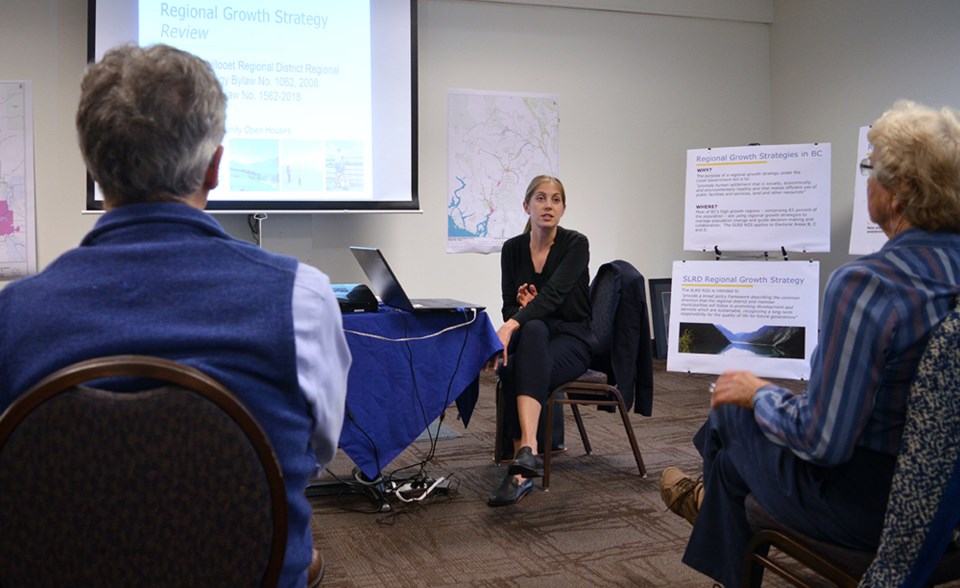Housing affordability was perhaps the topic of greatest relevance for locals during an open house held by the Squamish-Lillooet Regional District.
The event on June 14 in the Sea to Sky Hotel showcased a number of its proposed changes to its Regional Growth Strategy, or RGS.
This document provides guidelines for how the regional district should grow and develop.
Much of the changes being made are updates rather than complete overhauls of the policy. Nevertheless, the alterations could provide some insight on how certain topics, such as housing affordability in our region, are viewed by authorities.
“We’re in a crisis situation,” said Kim Needham, director of planning of the SLRD.
The RGS update would add specific language for inclusionary zoning, which means the regional district is hoping developers will set aside affordable units whenever they build.
“We are recommending, through this RGS review, to bring in some sort direct language to hopefully address that and some tools, one of them being inclusionary zoning requirements with aggressive targets, preferably at a minimum of 15 per cent*** affordable housing,” said planner Claire Daniels.
There was concern from an audience member this move would discourage buyers, as exclusivity can be one of the main attractions of buying a home in a nice area.
“The elephant in the room there is if I spend a million dollars on my townhouse with a great view, I don’t want a rental unit that’s subsidized next door to me,” said Ihor Zalubniak, who also acknowledged that affordable housing is a top-priority issue.
“I’m not going to buy there. I’m going to move on to buy somewhere else. That’s a real problem; people don’t want to mention it, don’t want to talk about it.”
Needham, however, said that this is a cultural mindset that perhaps should change.
“I think in the North American context though, we need to get away from that,” said Needham.
She pointed to European countries where it’s common to see different types of housing in the same zone.
Matt Gunn, who works as a District of Squamish planner, also voiced support for the inclusionary zoning.
“By spreading a mix of social stratification through the community you don’t end up... ghettoizing certain neighbourhoods,” said Gunn, who was attending the event as a private citizen.
“I think that’s one of the big advantages.”
He acknowledged that forcing lower-income housing units to be part of some developments may make some areas less desirable in the short run.
However, he said applying this principle universally over the long run would help address the problem.
That way, wealthier buyers will have to accept living with lower-income buyers, because it will become the norm.
It was also noted during the meeting that definition of ‘affordable’ housing was changed in the RGS to be consistent with BC Housing norms.
Under the new definition, housing is ‘affordable’ if monthly payments are less than 30 per cent of gross housing income.
However, Needham suggested that she’d prefer the phrase “gross income” replaced with “net income.”
Among the numerous other topics raised at the event were Indigenous relations, transit, and food security.
***Please note this story has been updated with a correction to the proposed target percentage of affordable housing - June 21, 12 p.m.



